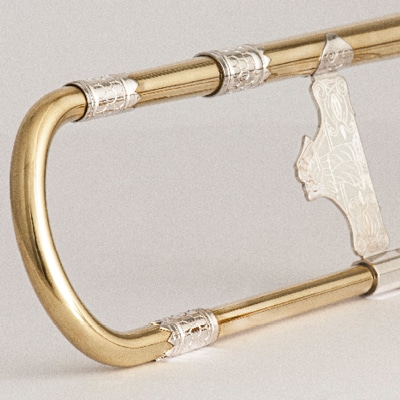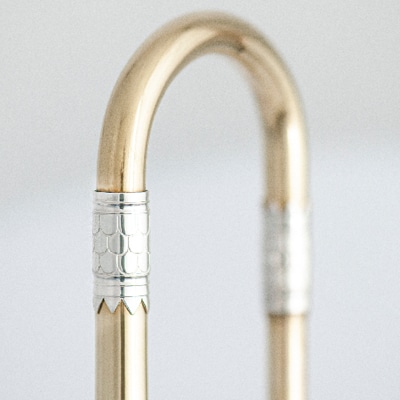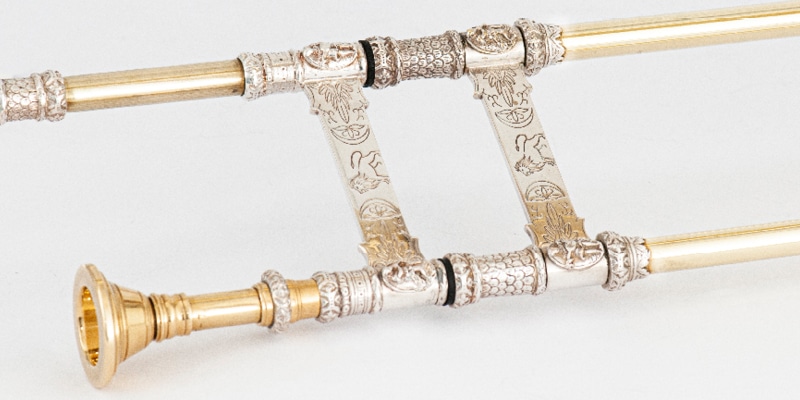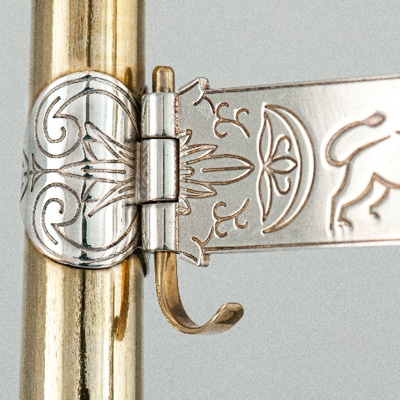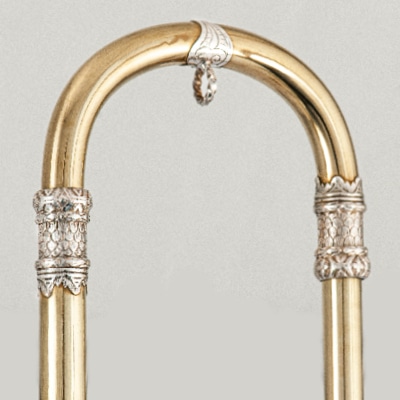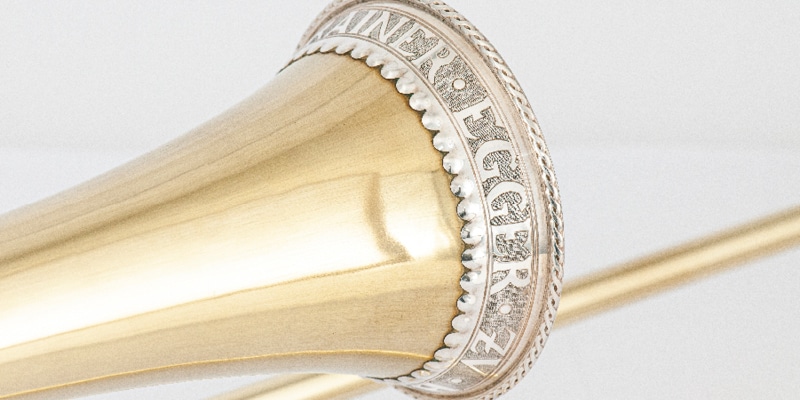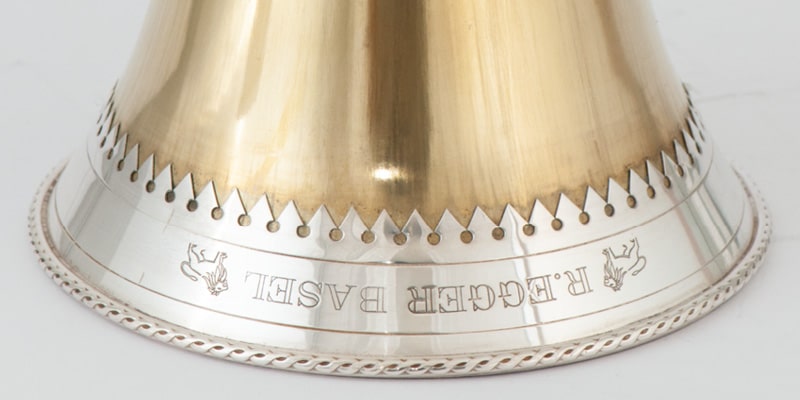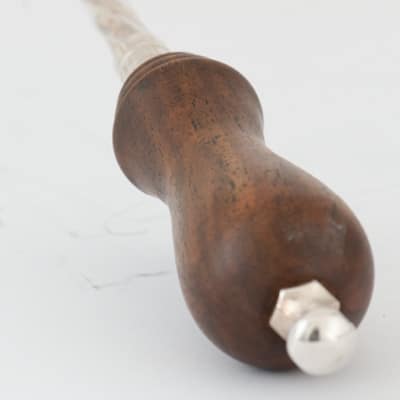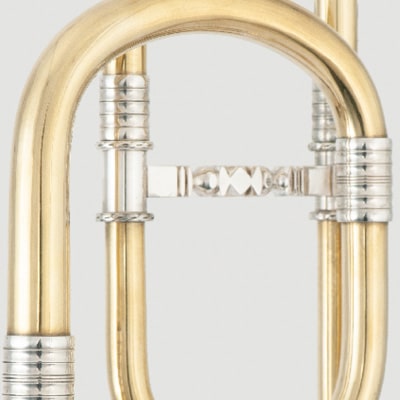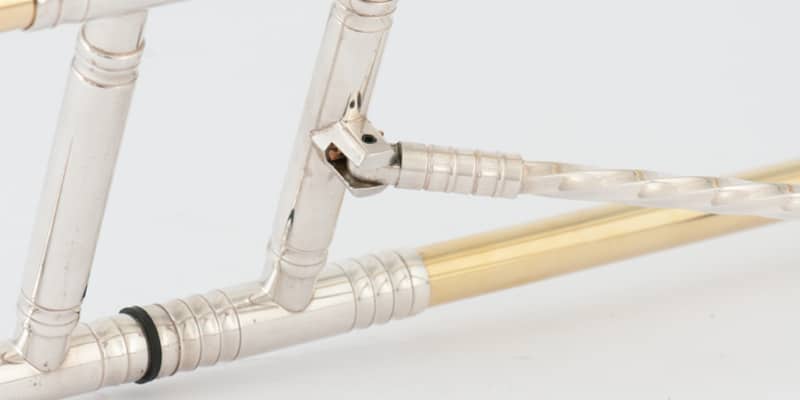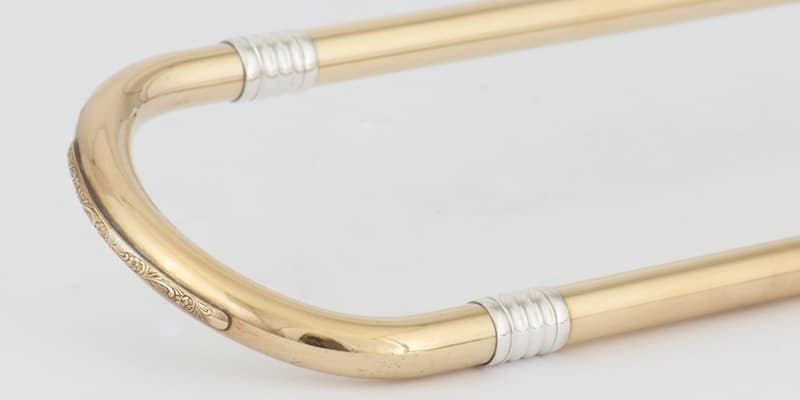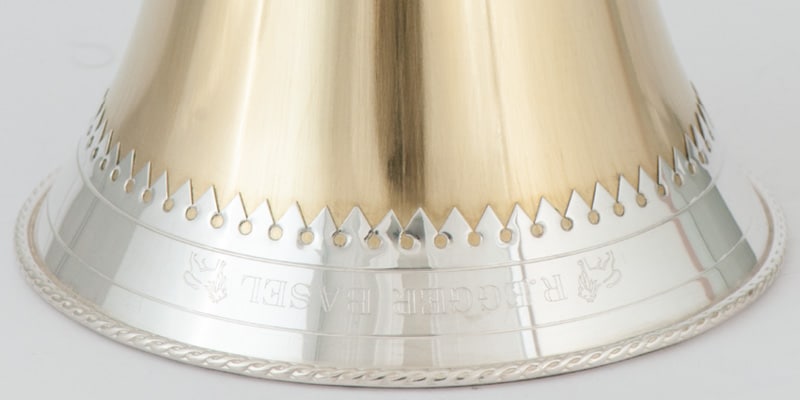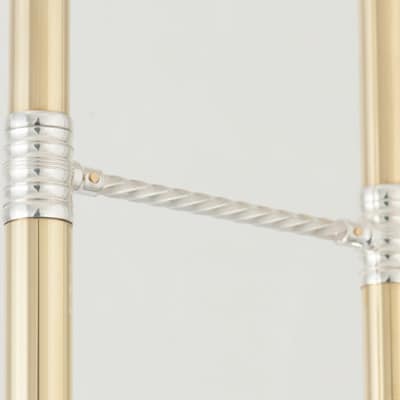Renaissance sackbuts
Alto sackbut after Starck

Model in Historic, in key of D 466 Hz, with tuning slide
Tenor sackbut after Anton Schnitzer the Elder, Nuremberg 1579.
Version in MDC Extra. The slide braces are clearly recognizable as hinges with horse head locks.
MDC Extra
The most historic version at Egger
For this rendition, we meticulously analyzed the details of the historical original instruments in museums and painstakingly recreated them. Starting with hammered and gently shaped Nuremberg brass, we crafted hand-engraved garlands and exact replicas of the ferrules and pommels based on the original casts.
But what sets the MDC Extra rendition apart are its additional features. It includes a fitted tuning slide, a triple slide with a brass soldered outer slide, a hinge on the slide cross braces, and a flat cross-stay with a hinge.
This results in a masterful piece crafted the old-fashioned way. We’re fortunate to offer this special rendition not just for the pictured Schnitzer tenor trombone, but also for our Starck alto sackbut and Hainlein tenor sackbut.
MDC Extra
The most historic version at Egger
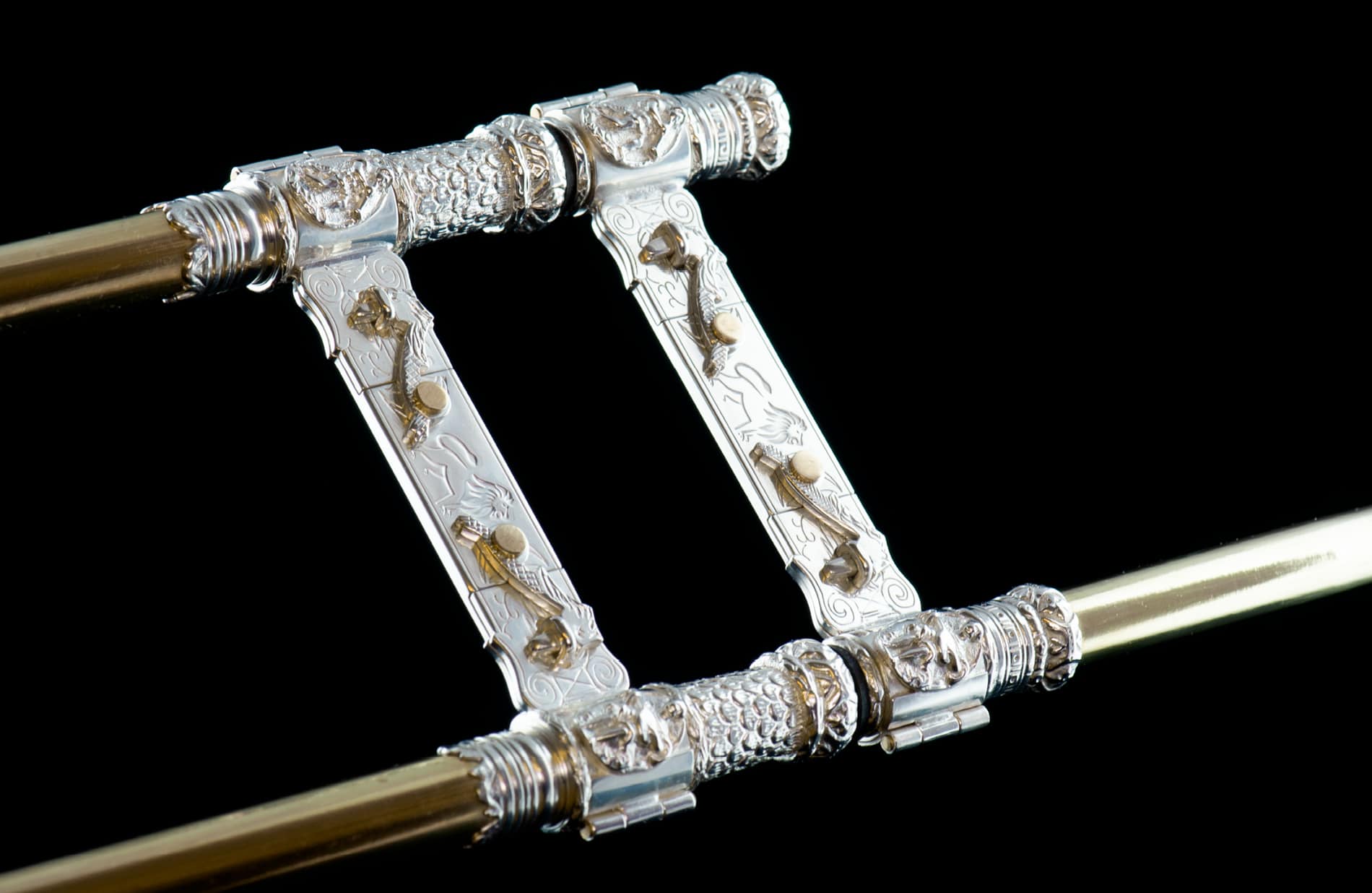
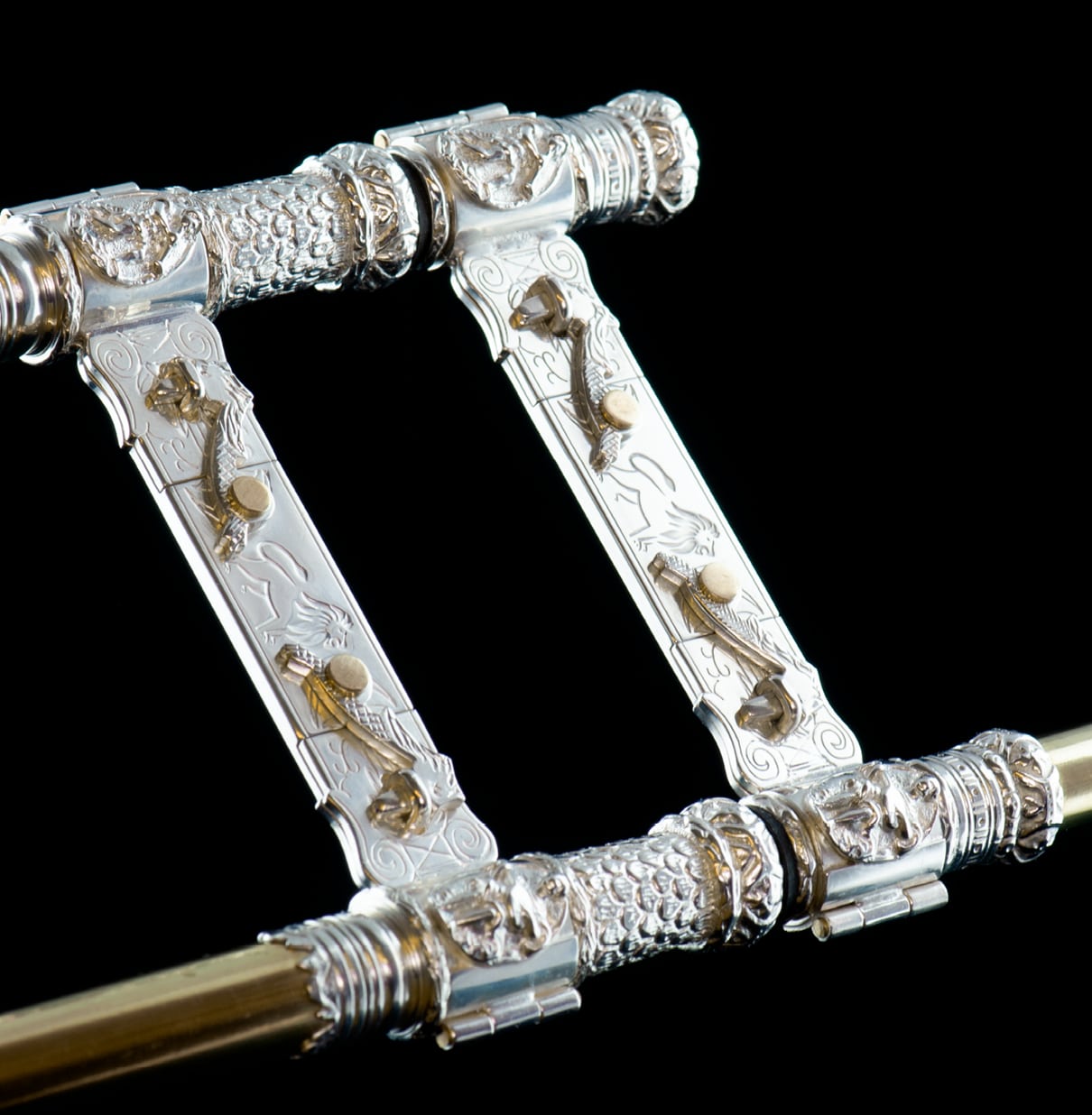
Tenor sackbut after Anton Schnitzer the Elder, Nuremberg 1579.
Version in MDC Extra. The slide braces are clearly recognizable as hinges with horse head locks.
For this rendition, we meticulously analyzed the details of the historical original instruments in museums and painstakingly recreated them. Starting with hammered and gently shaped Nuremberg brass, we crafted hand-engraved garlands and exact replicas of the ferrules and pommels based on the original casts.
But what sets the MDC Extra rendition apart are its additional features. It includes a fitted tuning slide, a triple slide with a brass soldered outer slide, a hinge on the slide cross braces, and a flat cross-stay with a hinge.
This results in a masterful piece crafted the old-fashioned way. We’re fortunate to offer this special rendition not just for the pictured Schnitzer tenor trombone, but also for our Starck alto sackbut and Hainlein tenor sackbut.
Tenor sackbut
after Hainlein

Model in Historic, in A 466 Hz key, with tuning slide
Regular bore
After Sebastian Hainlein, Nuremberg 1632
Original: Historical Museum, Frankfurt
- Key in A 466 Hz (equivalent to Bb 440 Hz)
- Bore: 10.5/11.0 mm
- Bell diameter: 98 mm
Wide bore
After Sebastian Hainlein, Nuremberg ca. 1632
Original: German Museum, Munich
- Key in A 466 Hz (equivalent to Bb 440 Hz)
- Bore: 11.5/12.0 mm
- Bell diameter: 120 mm
Tenor sackbut
after Schnitzer

Model in Historic, in A 466 Hz key, with hinge, without tuning slide
- Key in A 466 Hz (equivalent to Bb 440 Hz)
- Bore: 10.0/10.5 mm
- Bell diameter: 100 mm
Bass trombone
after I.Ehe

Model in Historic, in D 466 Hz key, handle with hinge joint
After Isaac Ehe, Nuremberg 1612
Original: in D 466 Hz, Germanisches Nationalmuseum, Nuremberg
- Key either in D 466 Hz (equivalent to Eb 440 Hz) or in F 440 Hz
- Bore: 11.5/12.0 mm
- Bell diameter: 124 mm
- Can be pulled out to 430 Hz. Can also be pulled out to 415 Hz, but the instrument works better if you use a semitone slide.
Bass sackbut
after I. Ehe in F, stretched

Model in Historic, in F 440 Hz key, with tuning slide, handle with hinge joint







